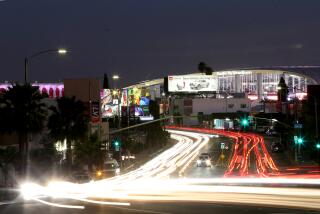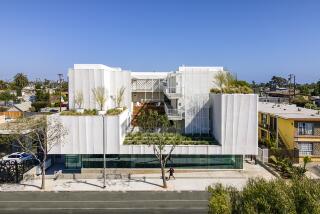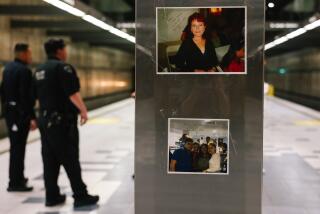Readers React: Boosting transit ridership: Stop focusing on density and start improving bus service
To the editor: Why do scholars like Ethan N. Elkind champion density as the solution to Los Angeles’ terrible traffic? They omit that it would take several generations to achieve even a modest amount relative to the size and sprawl of our region. (“How to boost L.A.’s sinking transit ridership,” Opinion, Feb. 1)
More important, they ignore that Southern Californians don’t want more people, cars or buildings. What we want are real-world steps that can be put in place quickly.
Dramatically lowering the cost of taking public transportation and creating many more bus lanes would help, as Elkind correctly points out. The third piece of this puzzle is frequency. Running buses at 3- to 5-minute intervals on all routes rather than 10 to 20 now would make taking public transportation even more convenient than cars. That’s just common sense.
I’m sure academics will have plenty of theoretical reasons why I’m wrong. What are they?
Bruce R. Feldman, Santa Monica
..
To the editor: Elkind drives home a key point.
L.A.’s transit ridership peaked in 1985 because the sales tax revenue from Proposition A in 1980 was used to reduce bus fares rather than fund the Blue Line train’s capital account. With our current rail-focused strategy, we have been unable to return to this peak despite a 20% increase in population.
The 1985 ridership peak was the result of getting transit investment choices right. Cost-effective transit means more service, more riders, more buses, more busways, lower bus fares and no trains.
Reconfiguring Los Angeles to fill trains would be expensive and foolish.
James E. Moore II, Los Angeles
The writer is a USC transportation engineering professor.
..
To the editor: Los Angeles is currently facing a historic opportunity to make the area more connected and transit-accessible while simultaneously addressing the housing affordability crisis.
Seventy percent of regular public transit commuters make less than $25,000 a year. Unless local governments protect and incentivize quality affordable housing near transit, the very residents who depend on public transportation — and whose tax dollars are funding the rail expansion — will be displaced as luxury apartments squeeze families out of their neighborhoods.
Making housing affordable near transit for low-income riders is key to creating a robust public transportation system.
Mariana Huerta Jones, Los Angeles
The writer is campaign and communications coordinator for the Alliance for Community Transit.
..
To the editor: By dismissing the transit ridership peak in 1985 as an anomaly, Elkind disregards the most important event for transit in Los Angeles in the last 40 years: the end of low, subsidized bus fares and the start of heavy expenditures on rail construction.
It is the most significant date for supporters of rail transit, but it is also a significant event for supporters of public transportation (which are not the same groups of people). As an economic experiment, the subsidized low fares showed how affordable prices draw people to transit.
As long as the only focus is on how many rail lines are built, transit ridership will continue to decline. Only by trying to answer the question of how to provide for our transportation needs will ridership increase.
Unfortunately for the single-minded promoters of rail, the answer may be something other than another rail line.
Keith Price, Los Angeles
Follow the Opinion section on Twitter @latimesopinion and Facebook
More to Read
A cure for the common opinion
Get thought-provoking perspectives with our weekly newsletter.
You may occasionally receive promotional content from the Los Angeles Times.










